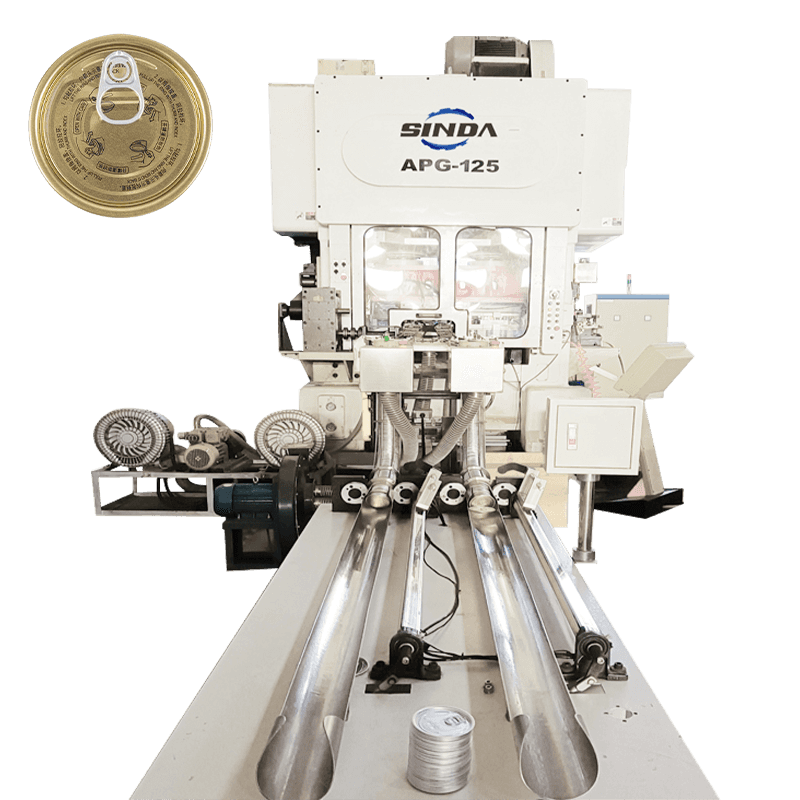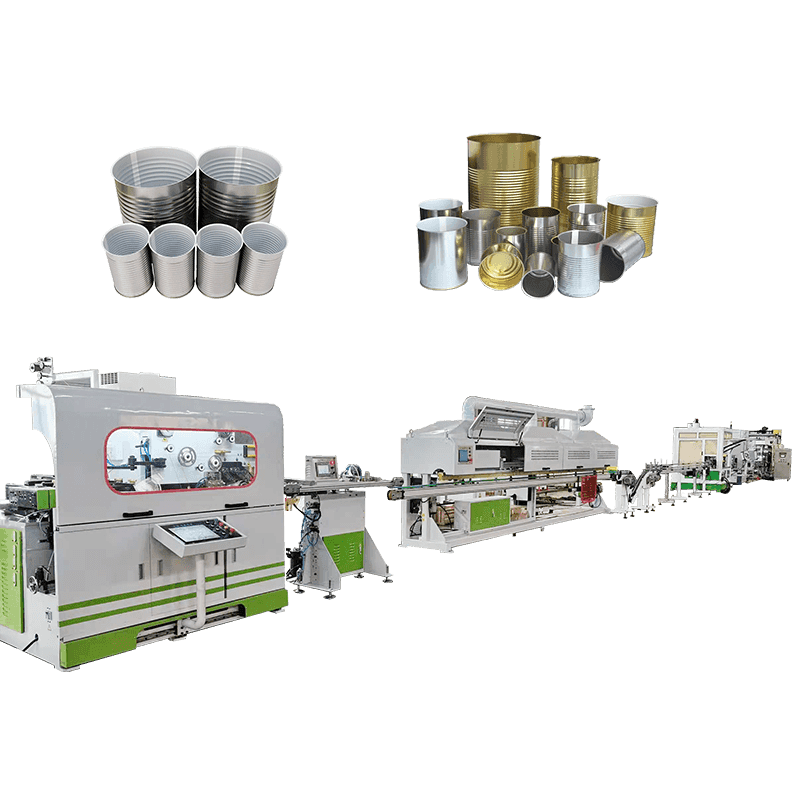Overview of Twist Off Lug Cap Production Lines
A twist off lug cap production line is an automated system designed to manufacture metal or composite caps that are widely used in food, beverage, and pharmaceutical packaging. These caps require precision forming, threading, and lining to ensure a proper seal. The production line integrates processes such as blanking, forming, threading, and lining, followed by curing and quality inspection. Modern production lines aim to improve productivity while allowing flexibility to meet the diverse needs of manufacturers handling multiple cap sizes and designs.
The Importance of Mold Change in Cap Production
Molds in a lug cap production line are crucial tools that determine the dimensions, shape, and thread structure of the caps. Since caps are not universally sized, manufacturers often need to switch molds when producing caps for different jars or bottles. The ability to change molds quickly is important for reducing downtime, maintaining consistent production efficiency, and enabling a manufacturer to adapt to changing customer demands in packaging requirements.
Traditional Mold Change Methods
In earlier cap production systems, mold change was a time-consuming task. Operators had to disassemble several components manually, replace the mold set, align the machine, and conduct test runs. This process often required hours and skilled technicians to ensure precision. Extended downtime not only reduced output but also increased labor costs, making it challenging for manufacturers with diverse product lines to remain competitive.
Advancements in Quick Mold Change Technology
Modern twist off lug cap production lines are increasingly equipped with quick-change systems that allow molds to be replaced more efficiently. These advancements often include standardized mold interfaces, modular components, hydraulic or pneumatic clamping systems, and automated alignment features. The goal of these technologies is to reduce the mold change process from hours to minutes, improving flexibility in production scheduling.
Steps in Quick Mold Change Process
The quick mold change process generally involves several coordinated steps. First, the machine is safely stopped and depressurized. Then, clamping systems are released either manually or automatically. The existing mold is removed, often using lifting tools or sliding rails. A new mold is inserted and aligned using guide pins or positioning mechanisms. Once in place, the mold is secured using clamps or hydraulic locks. After installation, a brief test run is conducted to verify cap quality and alignment. This streamlined process helps minimize downtime.
Factors Affecting Mold Change Speed
The speed of mold change depends on multiple factors, including the complexity of the cap design, the degree of automation in the production line, and the operator’s experience. Machines with fully automated clamping and alignment can achieve much faster changes compared to those relying on manual adjustments. Additionally, the physical size of the mold and the number of components to be replaced also influence the time required for a changeover.
Design Considerations for Multi-Product Flexibility
When designing a lug cap production line, manufacturers must consider flexibility to accommodate multiple products. This includes ensuring molds are modular and compatible with a standardized machine interface, minimizing the number of parts that need replacement, and incorporating digital control systems that allow operators to quickly adjust machine parameters for different cap sizes. These design features directly impact how effectively a production line can handle multiple product requirements.
Impact on Production Efficiency
The ability to quickly change molds has a direct effect on production efficiency. By minimizing downtime between product runs, manufacturers can maximize machine utilization and meet customer demands with shorter lead times. Efficient mold change also reduces waste, as fewer defective products are produced during alignment and testing phases. In highly competitive industries like food and beverage packaging, this efficiency can significantly improve operational performance.
Operator Skill and Training Requirements
Although quick mold change systems are designed to simplify operations, operator skill and training remain important. Workers must understand how to properly release, replace, and align molds, as well as troubleshoot issues that arise during changeover. Training programs help ensure that operators can complete changes safely and effectively without damaging molds or machine components. In some advanced systems, digital guides and sensor feedback assist operators in achieving accurate installations.
Cost Considerations in Quick Mold Change Systems
Equipping a production line with quick mold change technology requires investment in specialized components and automation systems. While the initial cost may be higher than traditional systems, the return on investment is often justified by reduced downtime, higher flexibility, and improved throughput. Manufacturers must balance upfront investment against long-term productivity gains, particularly if they operate in markets that demand frequent product variation.
Comparison Between Traditional and Quick Mold Change
The following table highlights the differences between traditional and quick mold change systems in lug cap production lines:
| Aspect | Traditional Mold Change | Quick Mold Change |
|---|---|---|
| Time Required | 2–4 hours | 15–30 minutes |
| Labor Intensity | High, requires skilled operators | Reduced, assisted by automation |
| Downtime Impact | Significant loss of productivity | Minimized downtime |
| Initial Cost | Lower equipment investment | Higher initial investment |
| Flexibility | Limited adaptability | High adaptability for multiple products |
Applications of Quick Mold Change in Packaging Industry
Quick mold change systems are particularly valuable in packaging industries where cap sizes and designs vary according to product type. For example, food companies may need to produce caps for sauces, jams, and beverages in different container dimensions. By reducing mold change time, these companies can meet diverse product demands without excessive downtime. This flexibility allows packaging facilities to serve multiple customers and product categories efficiently.
Safety Considerations During Mold Change
Safety is an important factor when changing molds, especially in high-speed production lines. Operators must follow established procedures to prevent accidents during mold removal and installation. Quick change systems often integrate safety interlocks that prevent machine operation until molds are properly secured. Hydraulic and pneumatic clamping systems are designed with fail-safe mechanisms to avoid accidental releases. Proper training and use of protective equipment further ensure safe mold change operations.
Maintenance Requirements of Quick Change Systems
Quick mold change systems require regular maintenance to ensure consistent performance. Clamping mechanisms, hydraulic systems, and alignment guides must be inspected and lubricated periodically. Worn or damaged parts should be replaced promptly to prevent malfunctions. Preventive maintenance not only extends the service life of molds and machines but also ensures reliability during frequent product changes. Maintenance schedules should be integrated into production planning to minimize unexpected downtime.
Integration with Digital Control Systems
Modern twist off lug cap production lines often integrate digital control systems that allow operators to switch between product configurations quickly. These systems store machine parameters such as pressure, temperature, and alignment for each mold type. When a new mold is installed, the system automatically adjusts to the corresponding parameters, reducing manual setup time. Integration with sensors and automation further enhances precision and repeatability during mold changes.
Future Developments in Mold Change Technology
Future advancements in mold change technology are likely to focus on increasing automation, reducing operator involvement, and enhancing precision. Innovations such as robotic mold handling, advanced sensor feedback, and AI-based predictive maintenance could further streamline the process. These developments will enable even faster transitions between products and further minimize downtime, supporting manufacturers in highly dynamic markets where product diversity continues to expand.
Industry Examples of Mold Change Efficiency
In industries such as beverage packaging, companies have reported significant efficiency improvements after adopting quick mold change systems. For example, a production facility producing both juice and sauce caps was able to reduce changeover time by over 70%, enabling more frequent product runs without impacting delivery schedules. Similar improvements have been documented in pharmaceutical packaging, where varying cap designs must comply with strict safety standards, requiring precise and reliable mold changes.
Performance Evaluation of Mold Change Systems
Evaluating the performance of mold change systems involves measuring parameters such as changeover time, downtime reduction, defect rates after change, and overall production throughput. Consistent improvements in these areas indicate the effectiveness of quick mold change technology. Manufacturers often conduct performance audits to assess whether their mold change process aligns with production goals and customer requirements. These evaluations help identify areas for further optimization and investment.

 English
English عربى
عربى русский
русский




